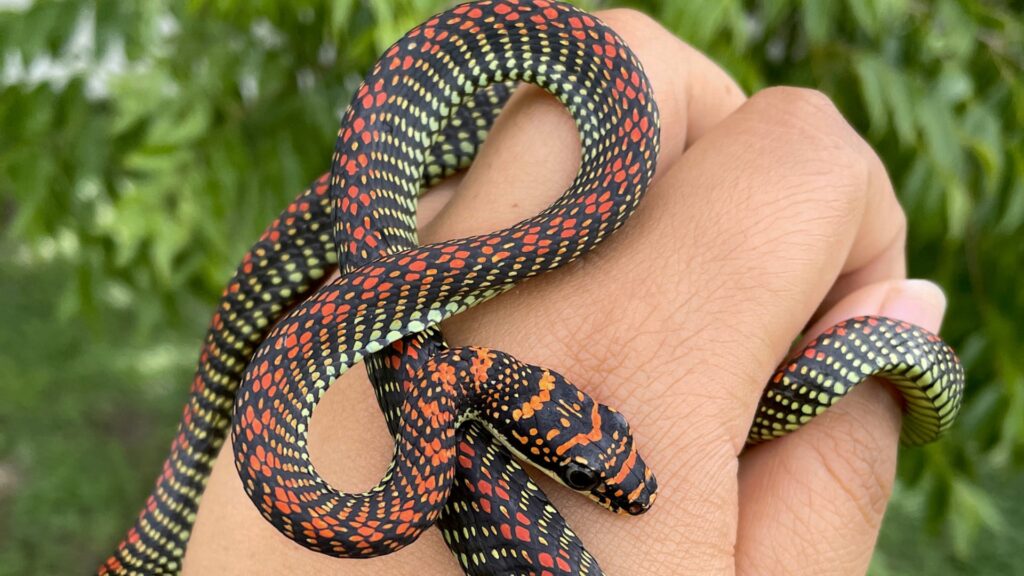
Flying snakes, with their enigmatic ability to glide through the air, have long fascinated both scientists and the public. Among the various species of these serpentine flyers, the Chrysopelea ornata, commonly known as the ornate flying snake, stands out for its vivid coloration and remarkable gliding capabilities. Found predominantly in South Asia, this snake defies conventional reptilian behavior, captivating researchers and nature enthusiasts alike. This article delves into the distinctive features, habitats, and the best locations to observe these fascinating creatures.
The ornate flying snake is a non-venomous species belonging to the genus Chrysopelea. Its distinguishing feature is its vibrant green body adorned with black and red patterns. Measuring around 3 to 4 feet in length, this snake is relatively slender, which aids in its ability to glide. Despite its name, the snake doesn’t truly fly; rather, it launches itself from trees and glides by flattening its body to create lift.
Unique Gliding Mechanism
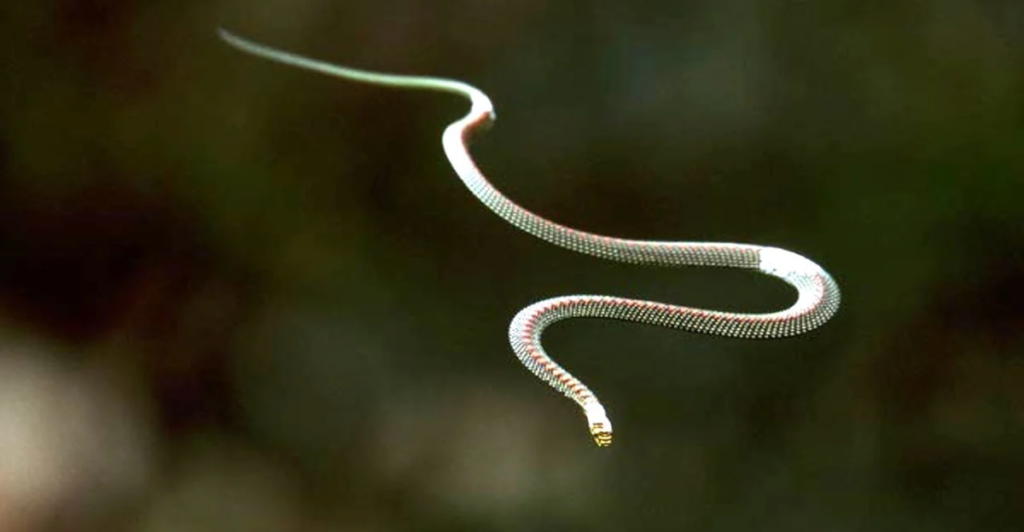
Unlike other gliding animals that rely on specialized membranes or limbs, Chrysopelea ornata achieves its aerial feats through body contortions. When leaping from a branch, the snake propels itself by pushing off with the lower half of its body. It then flattens its ribcage, transforming its cylindrical form into a pseudo-concave wing, allowing it to control its glide direction. This method of locomotion, while unusual, is highly effective in navigating the dense forests of South Asia.
Habitat and Distribution

Chrysopelea ornata is predominantly found in the lush forests of South and Southeast Asia. Its range includes countries like India, Sri Lanka, Thailand, and Malaysia. These snakes prefer forested areas with ample tree cover, which provides the necessary height for their gliding escapades. In some regions, they are also known to inhabit urban parks and gardens, adapting well to human-altered environments.
Diet and Predatory Behavior

This species is carnivorous, primarily feeding on lizards, birds, and small mammals. Their hunting technique is as fascinating as their gliding ability. They often use their gliding skills to ambush prey, descending from the trees with precision. This tactic not only surprises their prey but also gives them a strategic advantage in densely forested environments where ground-based hunting can be challenging.
The Role in Ecosystem
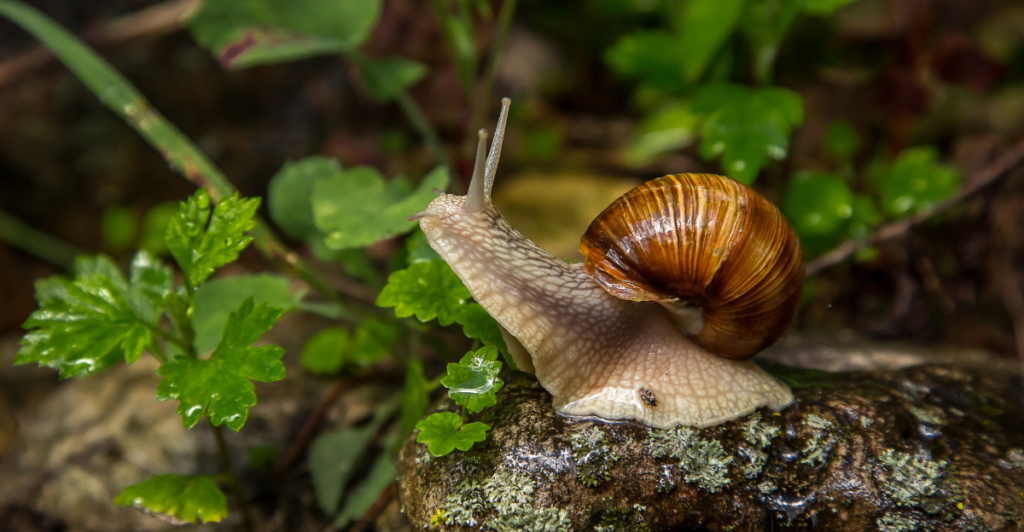
As a predator, Chrysopelea ornata plays a crucial role in controlling the populations of its prey, maintaining a balanced ecosystem. By feeding on various small animals, these snakes help regulate species populations, contributing to the ecological health of their habitats. Their presence indicates a thriving ecosystem, as they require a biodiverse environment to sustain their dietary needs.
Human Interactions

Despite their menacing appearance, ornate flying snakes are generally not dangerous to humans. They are non-venomous and tend to avoid confrontation. However, their ability to glide can sometimes startle people who encounter them unexpectedly. In rural areas, they are often revered for their beauty and agility, becoming a subject of local folklore and fascination.
Conservation Status

The International Union for Conservation of Nature (IUCN) currently lists Chrysopelea ornata as a species of least concern. However, habitat loss due to deforestation and urbanization poses a potential threat to their populations. Conservation efforts in several countries focus on preserving forest habitats to ensure these unique snakes continue to thrive.
Observing Flying Snakes in the Wild
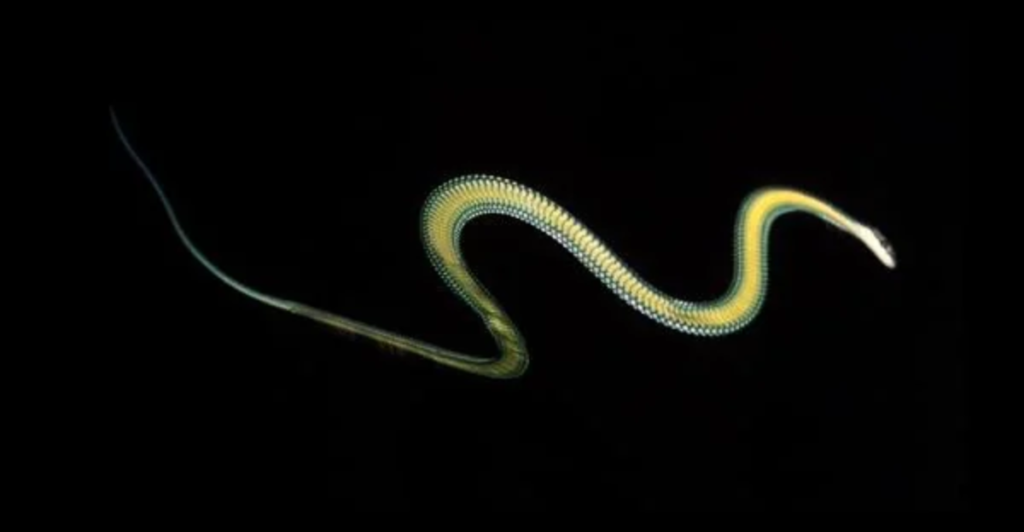
For those eager to witness the mesmerizing flight of Chrysopelea ornata, several locations across South Asia offer ideal opportunities. National parks and wildlife sanctuaries in India, such as the Western Ghats and Sundarbans, are excellent spots. In Thailand, the Khao Sok National Park provides a rich habitat for these snakes, offering visitors a chance to see them in their natural setting.
Safety Tips for Observing Snakes
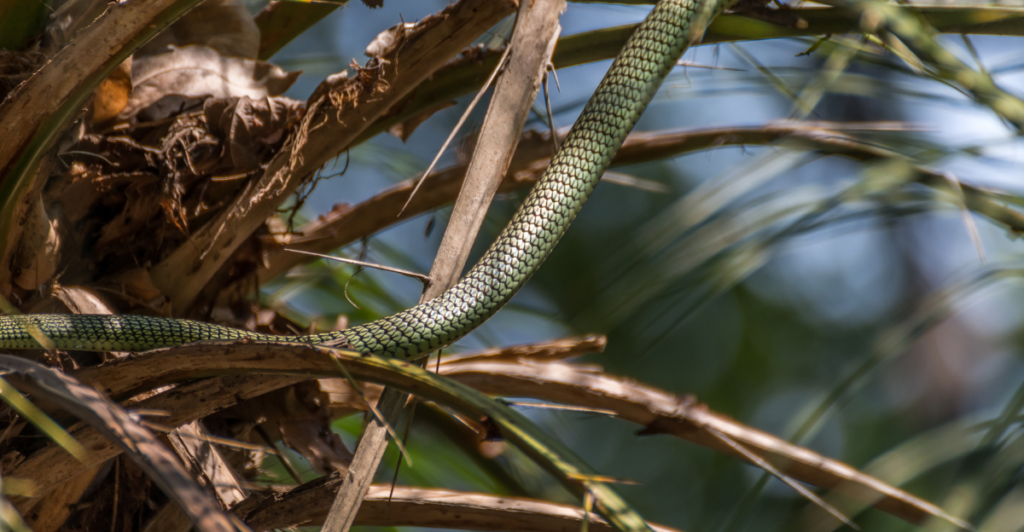
When venturing into the wild to observe these snakes, it is crucial to maintain a respectful distance. Wearing appropriate clothing and being aware of the surroundings can enhance safety. Avoid disturbing the snakes, as their natural behavior is best observed when they are undisturbed in their habitat.
Research and Scientific Interest
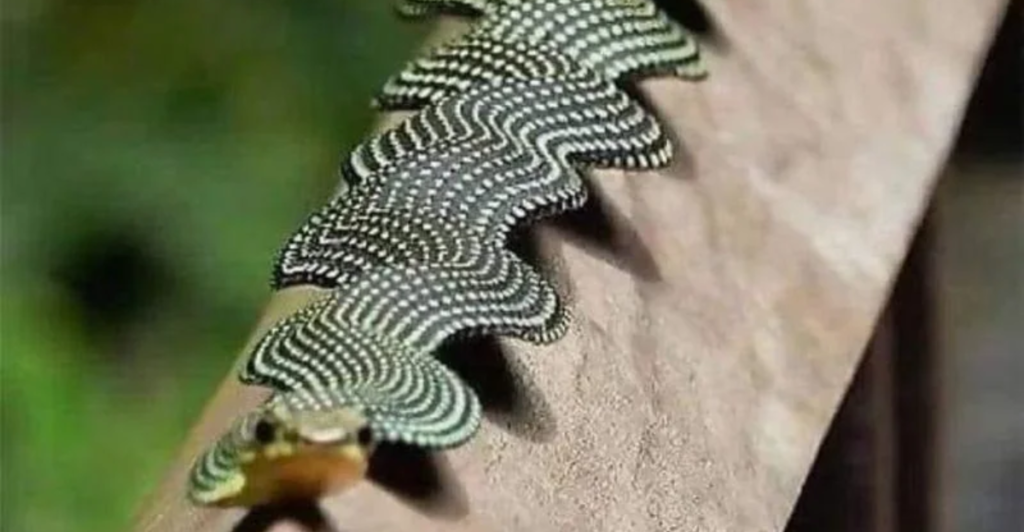
The gliding mechanism of Chrysopelea ornata has garnered significant scientific interest. Studies aim to understand the biomechanics of their flight, which could inspire advancements in robotics and aerospace engineering. The snake’s unique locomotion offers insights into energy-efficient movement and stability in flight, making it a subject of interdisciplinary research.
Cultural Significance
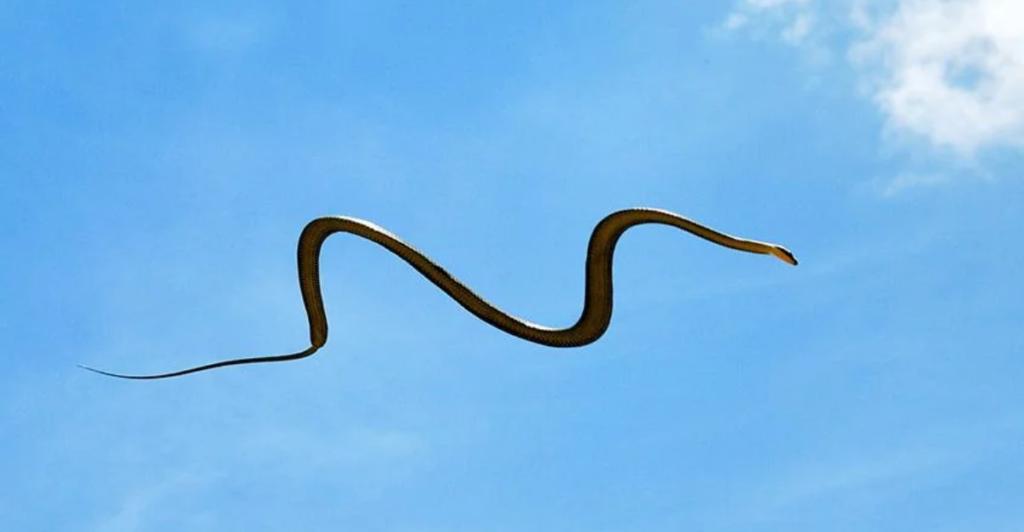
In some South Asian cultures, flying snakes are seen as symbols of agility and freedom. They often feature in folklore and local myths, depicted as guardians of the forest or omens of change. Their striking appearance and unusual abilities make them a source of intrigue and reverence in various communities.
Efforts in Education and Awareness

Several wildlife organizations and educational institutions in South Asia are working to raise awareness about Chrysopelea ornata. By educating the public on the importance of these snakes and their role in the ecosystem, these initiatives aim to foster a sense of coexistence and conservation.
Guardians of the Canopy

The ornate flying snake, with its remarkable gliding prowess, continues to awe those who encounter it. As guardians of the forest canopy, they exemplify nature’s ingenuity and adaptability. Protecting their habitats and understanding their behavior not only preserves a unique species but also enriches our knowledge of the natural world. Whether gliding silently through the trees or basking in the sun, Chrysopelea ornata remains a symbol of the wild beauty that South Asia’s forests have to offer.
Discover more of our trending stories and follow us to keep them appearing in your feed

Want Hummingbirds Year-Round? Plant These 11 Favorites
Deepest Hole On Earth Permanently Sealed After 2 Billion Year Old Discovery
13 Most Dangerous Animals in America
Stay connected with us for more stories like this! Follow us to get the latest updates or hit the Follow button at the top of this article, and let us know what you think by leaving your feedback below. We’d love to hear from you!







